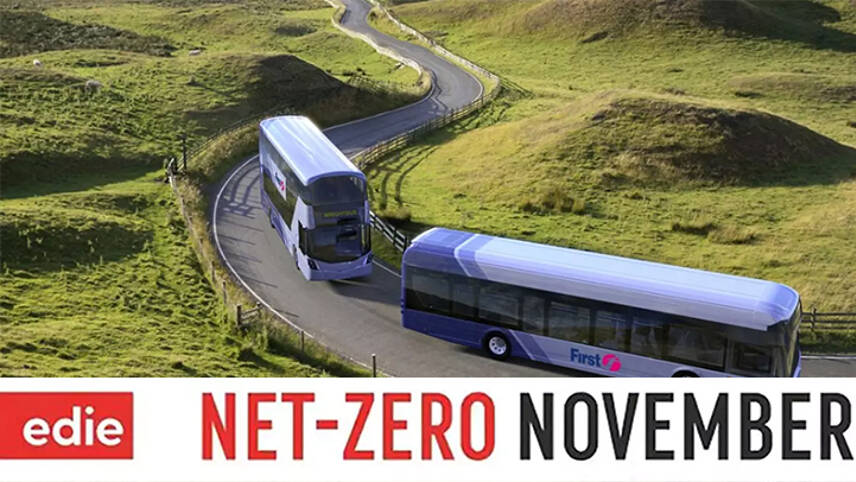Register for free and continue reading
Join our growing army of changemakers and get unlimited access to our premium content

As the Director of Decarbonisation Delivery at First Bus, my role primarily focuses on the implementation and delivery of our strategy to transition to zero-emission vehicles across the UK. As with many organisations, we have intensified our focus on decarbonisation in the last five years and are consistently looking at the most effective ways to reduce our emissions.
Caledonia as a blueprint
Just over a year ago we completed Phase 1 of the transformation of our Caledonia depot in Glasgow into the UK’s largest Electric Vehicle (EV) depot. The conversion enabled us to introduce a further 22 electric buses to Glasgow’s streets ahead of COP26 and install 69 dual-headed DC charging units, with enough power to charge 150 buses now and also to futureproof the depot, with the potential to charge up to 300 electric buses. This was an incredible project which was not only a first for First Bus, but a massive step for the industry too, as Caledonia offers a clear blueprint for a pipeline of depot decarbonisation.
Available space was one of the first issues that we identified, but with Caledonia sitting on a large 17-acre plot of industrial land, it was a relatively easy foundation to work with. We are actively looking at ways to reduce the amount of space needed, be that by adapting existing buildings rather than constructing something new, or by getting creative and including roof mounted chargers with leads that will suspend safely.
We also know that working with the fabric of our buildings and infrastructure as they are, and causing minimal disruption, is very important. This means aligning to the existing aesthetic of a building and making changes in a positive way i.e. rather than digging up concrete we should endeavour to dig up soft land, as it is far more environmentally friendly.
Finally, there is a need to mitigate how much this physical disruption affects the people working there. As we progress our decarbonisation plan, I’m working closely with people across different roles and teams within the business to ensure the transition is as smooth as possible.
Transforming our fleets
Without forsaking the challenges mentioned previously, depot decarbonisation is relatively straight forward – it is the transition to electric fleets which is our biggest challenge.
Transforming our fleet requires a significant amount of training and upskilling of our colleagues. Internal staff retention and attracting new colleagues is incredibly important to us, so we’re keen that our colleagues get to reap the rewards of having a decarbonised fleet too, from gaining new skills to getting to enjoy cleaner and quieter journeys.
The second most significant challenge is the availability of funding. Whilst funding is currently on our side following recent SULEB, ZEBRA and ScotZEB wins, there is no guarantee of it in the future. We need to ensure that we work together with local transport authorities and other operators so that timelines and plans are aligned, and we have the best chance of being awarded funds.
Supplier support
Across fleet and depot decarbonisation, having strong partnerships is key. I am a strong advocate for positive working relationships, as they are integral to how we succeed in our decarbonisation plans.
Heliox and Hitachi are two great examples of this. Both companies were instrumental in helping us to reach milestones and complete the Caledonia transformation to such a high standard. They helped us to achieve unique and innovative solutions.
One of the key challenges we now face is staying engaged with a wide range of suppliers, so that we can ensure we’re up to date with technology and equipment, and that our decarbonisation timeline is supported in the most effective way possible.
Reaching milestones
In terms of timelines and milestones, we are currently tracking on target – including the First Bus 2035 Zero Emissions mission. Once we have delivered our initial plans of adding an additional 471 vehicles to our current fleet, we are looking to purchase around 400 electric buses each year to help us achieve this goal. This is a huge number, but something that, at present, we feel is possible. These plans will no doubt be guided by funding, but I do feel confident with our progress, and that we are leading the way in the UK for decarbonisation.
In the near future, we’ll be continuing to progress with the decarbonisation of depots and fleets – addressing challenges and taking new opportunities as they arise.



Please login or Register to leave a comment.